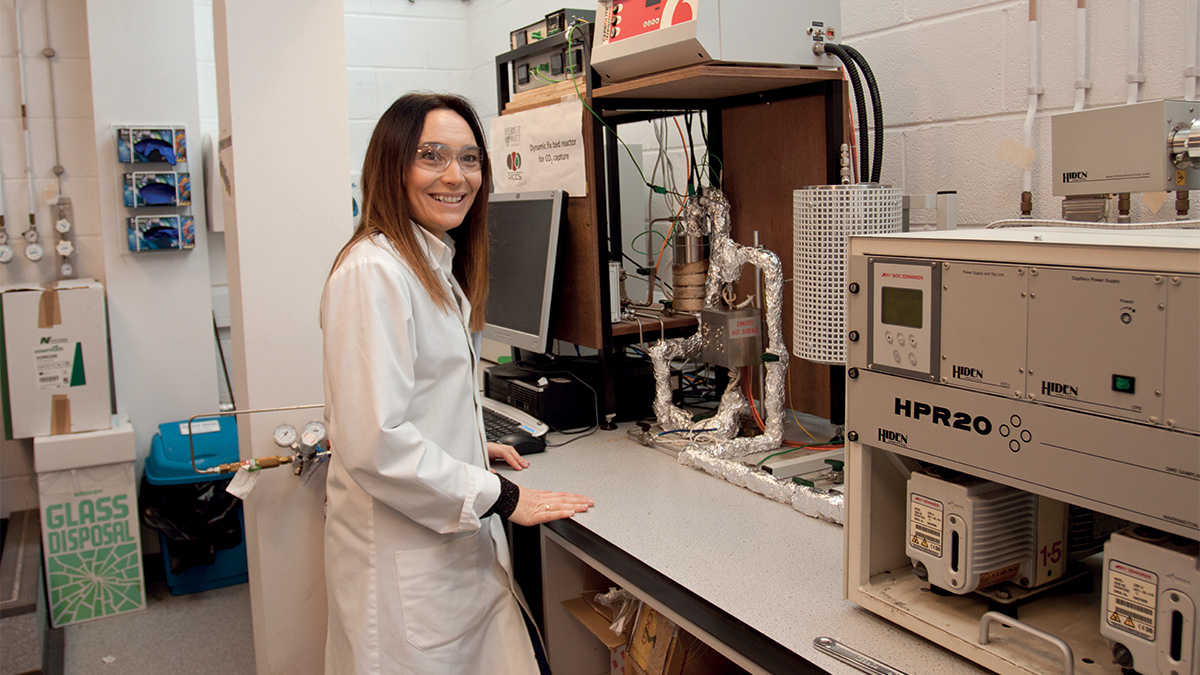Published:

According to The Intergovernmental Panel on Climate Change and effectively all climate models, achieving only a rapid reduction in CO2 emissions will not limit global warming to the targeted 1.5°C above pre-industrial temperatures. We will also need to remove between 1.3–29 Gigatons of CO2 from the atmosphere annually by 2050, an objective known as Carbon Dioxide Removal (CDR).
CDR can be achieved through a range of techniques that draw down atmospheric CO2 and send it to long-term storage. Direct Air Capture and Storage (DACCS) techniques are currently the focus of many efforts. In the last 18 months, dozens of new DACCS companies have been formed and are moving towards commercialization, while the US government has introduced significant new tax credits and grant-based funding programs for DACCS.
It is critical that developments and improvements for a range of DAC technologies are rapidly expedited this decade.
In direct air capture (DAC), CO2 is chemically or physically separated from other gas components in air in facilities that can be switched on and off, making DAC technologies highly controllable. DACCS offers large potential scalability, relative ease of monitoring, reporting and verification, and high durability of carbon storage. It also faces many challenges that may hold DACCS back from achieving the Gigaton-scale CDR needed to hit global temperature targets. Aspects such as the high energy requirements and costs and sluggish commercial deployment to date of other forms of carbon capture and storage suggest it will be challenging for DACCS technology to meet these expectations in time, without deliberate and strategic investments in research, development, and deployment.
A team of engineers led by Professor Susana Garcia from the Research Centre for Carbon Solutions (RCCS) at Heriot-Watt University joined efforts with an interdisciplinary team from the non-governmental organisation RMI to identify a set of critical priority research, development, and deployment initiatives that could help overcome the most important obstacles DACCS faces.
Garcia's team at RCCS is at the forefront of climate change mitigation, leading international efforts to unlock the potential of DACCS technologies. They adopt a holistic approach that couples basic science with engineering and environmental aspects to find the optimum, most economical and environmentally friendly solutions.
In the perspective document, just published in Energy & Environmental Science (EES), the team proposed a roadmap to 2050 for achieving scalable, safe and low cost DACCS. They perceive a wide gap between the United States government's Carbon Negative Shot target of below USD100/tCO2 removal and a path to achieve this objective through DAC. Based on the team's analysis, there are five main obstacle categories (materials, process design, equipment, system integration and infrastructure) that each warrant high-priority research, development, and deployment initiatives. These were compiled in a technology roadmap, where lead actors, critical paths and milestones, and investment cost ranges are provided for all identified priority initiatives.
Professor Garcia explained: “The development of the roadmap was anchored in an honest, objective assessment of publicly-available information, and strengthened through consultation with an advisory board of leading technical experts and practitioners drawn from academia, industry, financial services, government and civil society. We hope this has helped us craft a roadmap that resonates with decision-makers across these sectors”.
“It is critical that developments and improvements for a range of DAC technologies are rapidly expedited this decade. This advancement requires a greater understanding of the current state of DACCS and identification of existing obstacles to scaling at the pace required to meaningfully contribute to climate targets. This work is just one example of our successful partnership with RMI, whose global influence and leading position in driving change to a clean, prosperous, and secure low-carbon future is internationally recognised”, she added.
Daniel Pike, the Principal leading RMI's Carbon Dioxide Removal Initiative and RMI's lead in the study, commented: “This is the decisive decade for climate action. We need to decarbonise and reduce emissions at speed. At the same time we need to make deliberate, strategic investments in research, development, and deployment for DAC and other CDR techniques. If we don't make big gains this decade, it will require unprecedented, rapid improvements in cost and technology—and lots of luck— for DAC to be a viable option for large-scale CDR by 2050. RMI will use this roadmap to spur governments, donors, and investors to focus, coordinate, and ramp-up their investments in DACCS over the next five years, because we can't afford them delaying that.”
Professor Gill Murray, Deputy Principal (Business and Enterprise) at Heriot-Watt University, added: “The publishing of this roadmap is another step towards tackling this global challenge. This area of research is key and Professor Garcia is driving this as co-lead of the manufacturing and industry theme, in our latest global research institute launching later this year.”
Garcia concluded: “We expect this timely roadmap will help drive progress and make a significant impact not only on research and development but also on the current funding and investment DACCS landscape.”
RMI was founded as Rocky Mountain Institute in 1982 and is an independent nonprofit that transforms global energy systems through market-driven solutions to align with a 1.5°C future and secure a clean, prosperous, zero-carbon future for all. The organisation works in the world's most critical geographies and engages businesses, policymakers, communities, and NGOs to identify and scale energy system interventions that will cut greenhouse gas emissions at least 50% by 2030. RMI has offices in Basalt and Boulder, Colorado; New York City; Oakland, California; Washington, D.C. and Beijing.
Read A roadmap for achieving scalable, safe, and low-cost direct air carbon capture and storage in Energy & Environmental Science, 2023, DOI: 10.1039/D3EE01008B